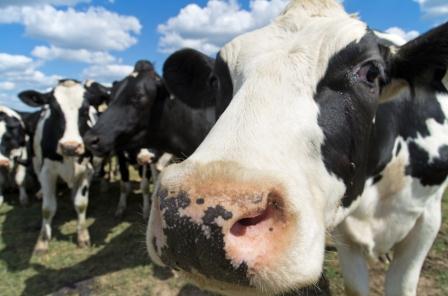AAF position on the status of starch and starch-derived products and starch by-products in the context of REACH with regard to their use in applications other than food, feed and pharma[1].
1. Starch and starch-derived products
Native starch
Starch and pregelatinised starch are exempted from Registration under the REACH Regulation independently of the botanical origin.
Starch is listed on Annex IV of the Regulation that includes the products that are exempted from registration under the REACH Regulation on the basis that “sufficient information is known about these substances that they are considered to cause minimum risk because of their intrinsic properties” (Art. 2.7). This entry covers all botanical origins from which starch can be produced, including rice, barley, peas, etc. Reference to “corn, wheat and sorghum, and from roots and tubers such as potatoes and tapioca”, is introduced in the text of the Regulation by the expression “such as” and it is therefore made as a way of example. Additionally, native and pre-gelatinised starch are regarded as one substance, irrespective its botanical origin, when deciding that it is eligible to Annex IV.
Modified starches
Post-reacted or modified starches are exempted from registration when they meet the definition of “polymer” in Art. 3.5 of REACH.
Only the substances used for modification (= post-reactants) of the polymeric carbohydrate need to be registered according to Art. 6.3 of REACH when the polymer consists of 2 % weight by weight (w/w) or more of such substance in the form of chemically bound substance and the total quantity of that substance makes up 1 tonne or more per year, per manufacture/import.
This is also confirmed by the answer on question UID 0071 of Q&A support on REACH as provided by ECHA on Frequently Asked questions by the industry. This answer was agreed in November 2008 following meetings with national representatives of Competent Authorities and the European Chemicals AgeAgency2.
[ http://echa.europa.eu/documents/10162/13645/faq_qa_new_unique_id_table_en.pdf ]
Dextrin, maltodextrin, glucose and fructose
Dextrin, maltodextrin, glucose and fructose are exempted from Registration under the REACH Regulation independently of their botanical origin.
Dextrin, maltodextrin, glucose and fructose are listed in Annex IV of the Regulation, without specification of the botanical origin. Each entry covers all botanical origins from which they can be produced.
Glucose Syrups
“Syrups, hydrolysed starch” and “Syrup, corn, dehydrated” are exempted from Registration. The exemption is limited to corn as botanical origin. The same glucose syrups produced from other botanical origins require registration. Wheat glucose syrups (also in dried form) have been registered in 2010.
The inclusion of “Syrups, hydrolysed starch” and “Syrup, corn, dehydrated” in Annex IV of the Regulation only covers corn as raw material although “Syrups, hydrolysed starch” are the same regardless their botanical origin. The EINECS definition refers to “corn” as the starch industry was only using this raw material at compilation of the EINECS inventory. Due to development of new processes and for economic reasons, the starch industry is using different raw materials to produce glucose syrups.
The same products made from other botanical origins than corn have to be registered. Companies interested to cover wheat glucose syrups for technical applications have registered in 2010 or 2013 (depending on the tonnage band) for their producing legal entities. Cargill is Lead Registrant for wheat glucose syrups (in syrup and dried form).
Glucose-fructose syrups
Glucose-fructose syrups are exempted from Registration under the REACH Regulation independently of their botanical origin when glucose and fructose are the only major constituents making up the final substance (i.e. other constituents below 10 % w/w each).
The crude product containing in excess of 80 % fructose on dry solids is to be viewed as a mono-constituent meeting the definition of “Fructose” mentioned in Annex IV.
The product obtained by blending glucose (i.e. a substance or syrup containing glucose in excess of 80 % on dry matter) and fructose is a mixture. The registration requirement applies, when relevant, to the two components.
Glucose-fructose syrups containing glucose and fructose as the only constituent above 10 % (other constituents remain below 10 % w/w) as a result of a manufacturing process are exempted from registration since both major constituents making up the final substance and are mentioned in Annex IV.
Footnote (9) of section 4.2.2 of the ECHA guidance “Guidance for identification and naming of substances under REACH and CLP” (version 1.2 – May 2012) states: ” (A number of substances are exempted for registration in REACH (e.g. the substances listed in Annex IV)) indicates that exemption of registration could be applied for multi-substances which are considered to cause minimum risk because of their intrinsic properties.”
A multi-constituent substance is a substance, defined by its quantitative composition, in which more than one main constituent is present in a concentration = 10% (w/w) and < 80% (w/w). A multi-constituent substance is the result of a manufacturing process. REACH requires the registration of a substance as produced. If a multi-constituent substance is manufactured, the multi-constituent substance needs to be registered. However, if the major constituents are exempted from Registration also the manufactured product is exempted.
Glucose-fructose syrups obtained by either blending “fructose” to “glucose” or product obtained after isomerisation of “glucose”, have the same composition[3] and should be regarded as exempted from registration under REACH.
Inactivation of pre-registrations conducted to cover for glucose-fructose syrups should be considered by interested parties.
2. Proteins and derived products
Polymeric proteins obtained from natural sources
Amino acid monomers of polymeric proteins and of chemically modified polymeric proteins obtained from natural sources are exempted from registration[4].
Amino acid monomers of natural polymers obtained through a process covered by Art. 3.39, and of the chemically modified natural polymers, are exempted from registration (ECHA Guidance for monomers and polymers). Recent guidance has been provided by the CASG on the Annexes of REACH that indicates that also in the case of polymers and of chemically modified polymers obtained from natural sources through processes that are not covered by Art. 3.39 of REACH, the monomers are exempted from registration since they are considered as ‘non-isolated intermediates’. This guidance confirms that the obligation to register the monomers in polymers does not apply to the amino acid monomers of polymeric proteins and of chemically modified polymeric proteins, whether naturally occurring or obtained from natural sources. Only the substances used for the modification of the polymeric protein that are chemically bound within the polymer need to be registered according to Art. 6.3 of REACH when the thresholds mentioned in this article are exceeded. Therefore, vegetable proteins and chemically modified vegetable proteins obtained from natural sources are exempted from the scope of REACH.
3. Starch by-products
Corn steep liquor, potato fibres, and concentrated potato juice.
Corn steep liquor (CSL) has been registered in 2010. Roquette is Lead Registrant for this substance.
-
Potato fibres qualify for the exemption provisions for natural polymers as described under point 2 above for proteins made from natural sources.
-
Concentrated potato juice complies with the exemption provided under REACH Annex V 8. as a substance occurring in nature.
Issued in December 2008
Updated in November 2010
Last update in December 2013
Download the PDF position paper here
[1] Applications in food, feed and pharmaceuticals are excluded from the scope of REACH by art. 2.5. of “Regulation (EC) No 1907/2006 of the European Parliament and of the Council of 18 December 2006 concerning the Registration, Evaluation, Authorisation and Restriction of Chemical substances (REACH), establishing a European Chemicals Agency, amending Directive 1999/45/EC and repealing Council Regulation (EEC) No 793/93 and Commission Regulation (EC) No 1488/94 as well as Council Directive 76/769/EEC and Commission Directives 91/155/EEC, 93/67/EEC, 93/105/EC and 2000/21/EC”, OJ L 396, 30 December 2006, page 1.
[2] “ Q&As on REACH - http://echa.europa.eu/support/qas-support/qas”, Version 1.0,- June 2013.
[3] The definition, under EU law of “glucose syrups” does not differentiate for the presence of fructose, nor when the presence of fructose in glucose syrups derives by direct isomerisation or by adding fructose from other sources. Only as concerns labelling does EU law indicate that glucose syrups including more than 5% of fructose are to be labelled (among others) as “glucose-fructose syrups” (please refer to Art. 2.5 of Directive 2001/111/EC relating to certain sugars intended for human consumption).
[4] Q&As on REACH - UID 0070 and 0071- http://echa.europa.eu/support/qas-support/qas, Version 1.0. June 2013.

